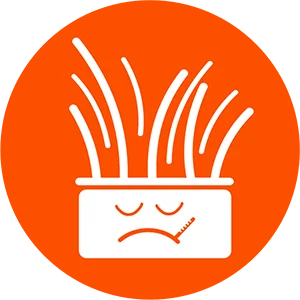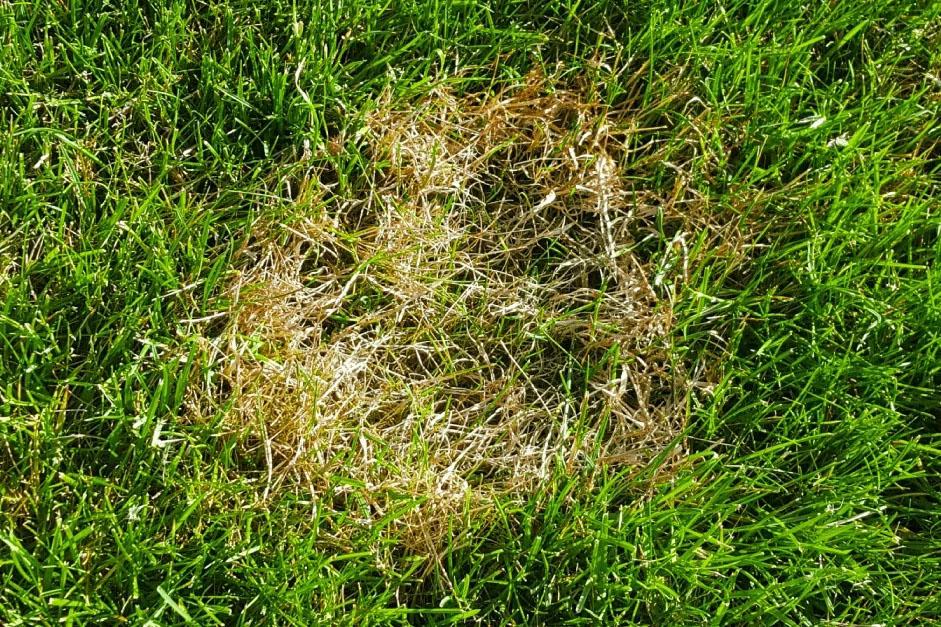Effective Lawn Fungicide Treatments in Friendswood, TX
Hassle-Free Lawn Fungicide Solutions for Property Owners
Have you noticed brown spots or circular patches on your lawn? This is one of the common signs of a fungal disease, which can leave your grass and yard looking unsightly if left untreated. When you notice something isn’t right with your lawn, time is of the essence. Fortunately, the lawn care professionals at Lawn Pride of League City, Pearland, and Friendswood have years of experience correctly identifying fungal growth and effectively combatting it so your residential property stays looking beautiful.
When you’re up against lawn diseases native to the Friendswood, TX region, it pays to have our seasoned experts on your side. Most of the diseases that typically affect grass are caused by fungal growth. Getting ahead of a spreading disease is critical to limiting the damage it will cause. Our team is highly knowledgeable about fungal lawn diseases and can apply a fungicide before the fungus gets out of control. Contact your local Lawn Pride of League City, Pearland, and Friendswood today to learn more about your lawn fungicide treatment options.
We Offer Treatments for All Types of Lawn Fungus
When a fungal disease overtakes your lawn, acting quickly is essential. Our lawn care professionals can inspect your lawn, diagnose the type of fungus growing, and use the most effective fungicide treatment to control it successfully. Disease in turf is influenced significantly by rainfall, temperature, humidity, cultural practices, and the environment in your area. Some of the most common fungal diseases we treat include the following:
- Brown patch lawn disease
- Yellow patch lawn disease
- Zoysia patch lawn disease
- Summer patch lawn disease
- Take-All patch lawn disease
- Dollar spot lawn disease
- Snow mold lawn disease
- Slime mold lawn disease
- Leaf spot lawn disease
- Pythium lawn fungus blight
- Red thread lawn disease
- Fairly Ring lawn disease
- Necrotic ring spot lawn disease
- Powdery mildew lawn disease
- Rust lawn disease
- Fusarium patch lawn disease
- Stripped smut lawn disease
- Crown rot anthracnose
The disease tends to return to the same lawns year after year without significant changes in cultural practices or the introduction of disease-resistant grass types. As such, our technicians may recommend you add the fungicide program to your regular program to ensure we can take a more proactive instead of reactive approach to limiting disease activity in your lawn.

How Fungal Diseases Develop on Your Lawn
It can be helpful for property owners to understand how fungus develops on lawns. Fungal spores exist on every residential lawn but only become problematic when three circumstances align. This scenario is often called the disease triangle and includes the following elements:
Presence of Pathogens
With any lawn fungal disease, the spores of that fungi must be present for the infection to grow.
Susceptible Host
The fungus might be present on your lawn, but it won’t take root in your grass unless that grass is susceptible to that type of fungus. It’s important to include disease-resistant cultivars of grass in your lawn. While not all cultivars resist all diseases, mixing multiple types can limit the damage a disease will cause to your lawn.
Environmental Conditions
Unless the conditions are just right, a present pathogen will not affect a susceptible host. Favorable disease conditions include heat and drought, low mowing heights, too little or too much water, compacted soil, excessive straw, and unbalanced fertility.

Frequently Asked Questions About Lawn Fungicide Treatments
When a fungal disease overtakes your lawn, you may feel overwhelmed. Lawn Pride of League City, Pearland and Friendswood is here to help you each step of the way in your battle against lawn fungal disease. We'll start by accurately diagnosing the type of fungus affecting your lawn and develop an effective treatment plan to control it. We've answered some of the most common questions about our fungicide treatments below.
When Should I Schedule Fungicide Treatments?
Fungicide treatments should be applied at your lawn's first sign of disease. They're most successful when applied as a preventative measure, but they can also control large-scale lawn infections when applied by an experienced team of lawn care professionals. We most commonly apply fungicide treatments monthly from early spring until late fall.
How Can I Prevent Fungal Disease on My Lawn?
Fungicides are best applied pre-emptively before the disease has begun to infect the grass plant. Curatively, fungicides are used to slow down the disease from spreading. This allows for cultural control actions, irrigation, and weather to change favorably to eliminate the environment that favors disease development and activity. Some tips for preventing grass fungus from spreading on your lawn include the following:
- Water early in the morning so the sun can dry it out throughout the day
- Mow frequently to approximately 3.5”
- Do not remove more than a third of the grass length at a time when mowing
- Monitor your lawn to ensure it gets no more than 1-1.5" of water per week
- Aerate your lawn two times per season to break up the thatch and to allow for proper air circulation in the root zone
- Sometimes taking a leaf rake and raking the diseased area will help to open the grass blades and allow the infected area to dry out. Remove excessive grass that may result and dispose of it properly
- If the disease has been identified in your lawn, we recommend you bag your lawn for two to three weeks to remove infected grass blades. This will allow your lawn to recover quicker without re-infection. It’s essential to dispose of yard waste in accordance with your local ordinances
What Is Brown Patch Fungus?
Brown patch fungus is one of the most common fungal diseases caused by Rhizoctonia solani spores. Once it starts to grow, it spreads rapidly and causes circular areas of brown grass surrounded by dark, narrow rings on lawns. Due to its rapid growth and potential destruction, treating this type of fungus promptly is crucial.
Request a Free Fungicide Treatment Estimate Now!
With decades of experience helping homeowners keep their lawns looking healthy and beautiful year-round, Lawn Pride of League City, Pearland, and Friendswood is here to provide premier fungicide treatment services for your property in Friendswood, TX, and the surrounding areas, including League City and Pearland. We’ll accurately diagnose the type of lawn fungus affecting your grass and develop a fungicide treatment plan to get your yard healthy and thriving again. To get started, request your fungicide treatment estimate today. We look forward to hearing from you!



